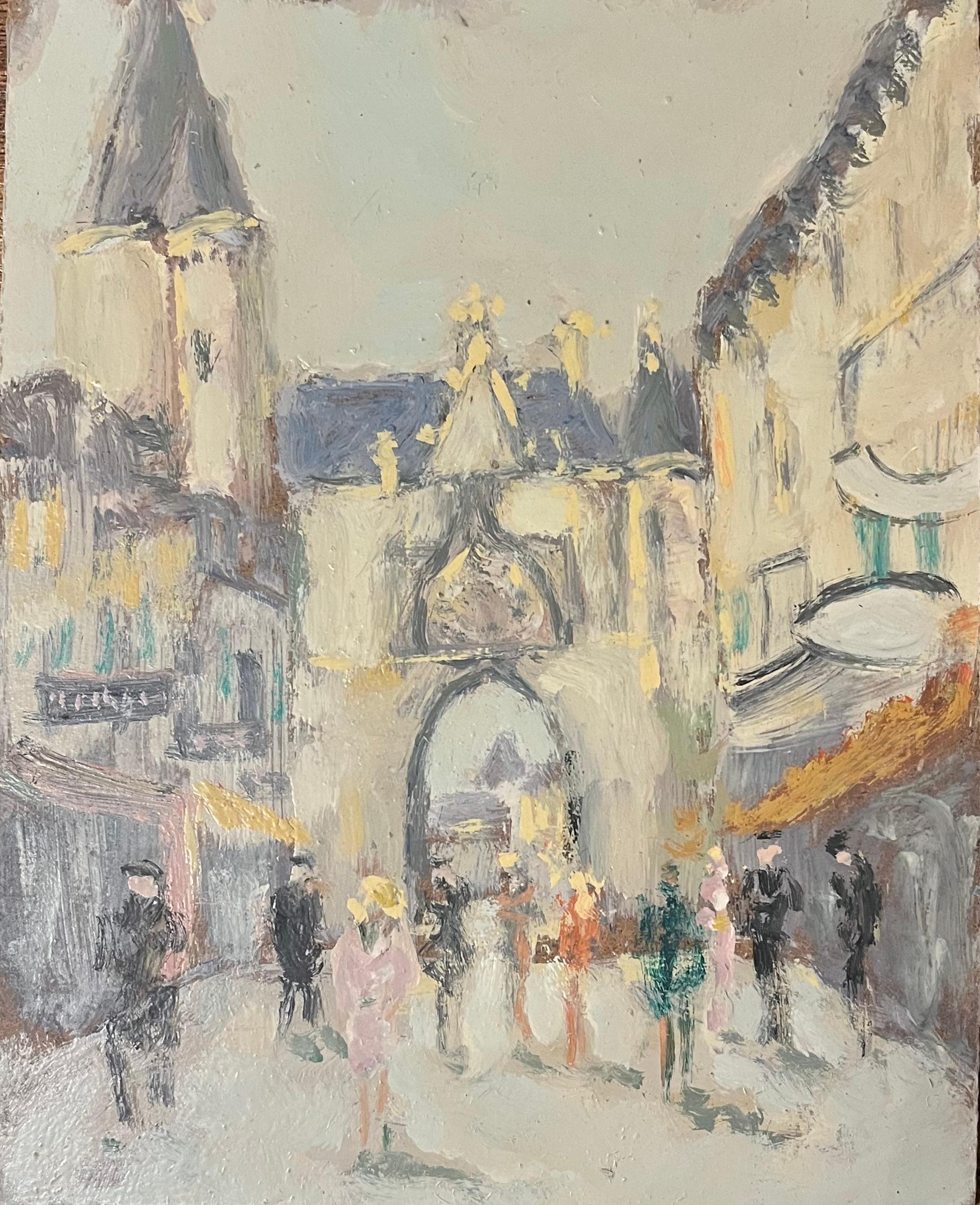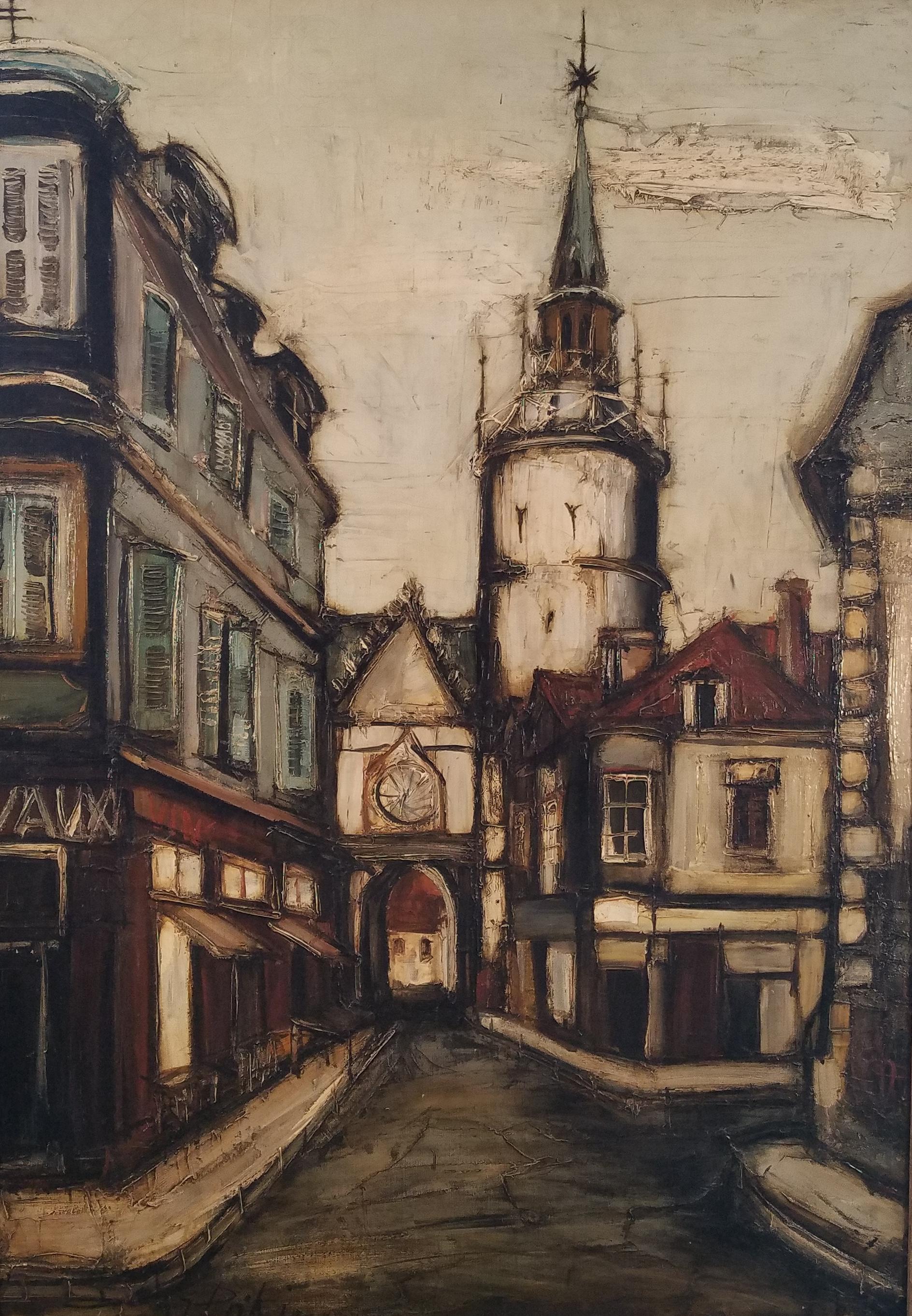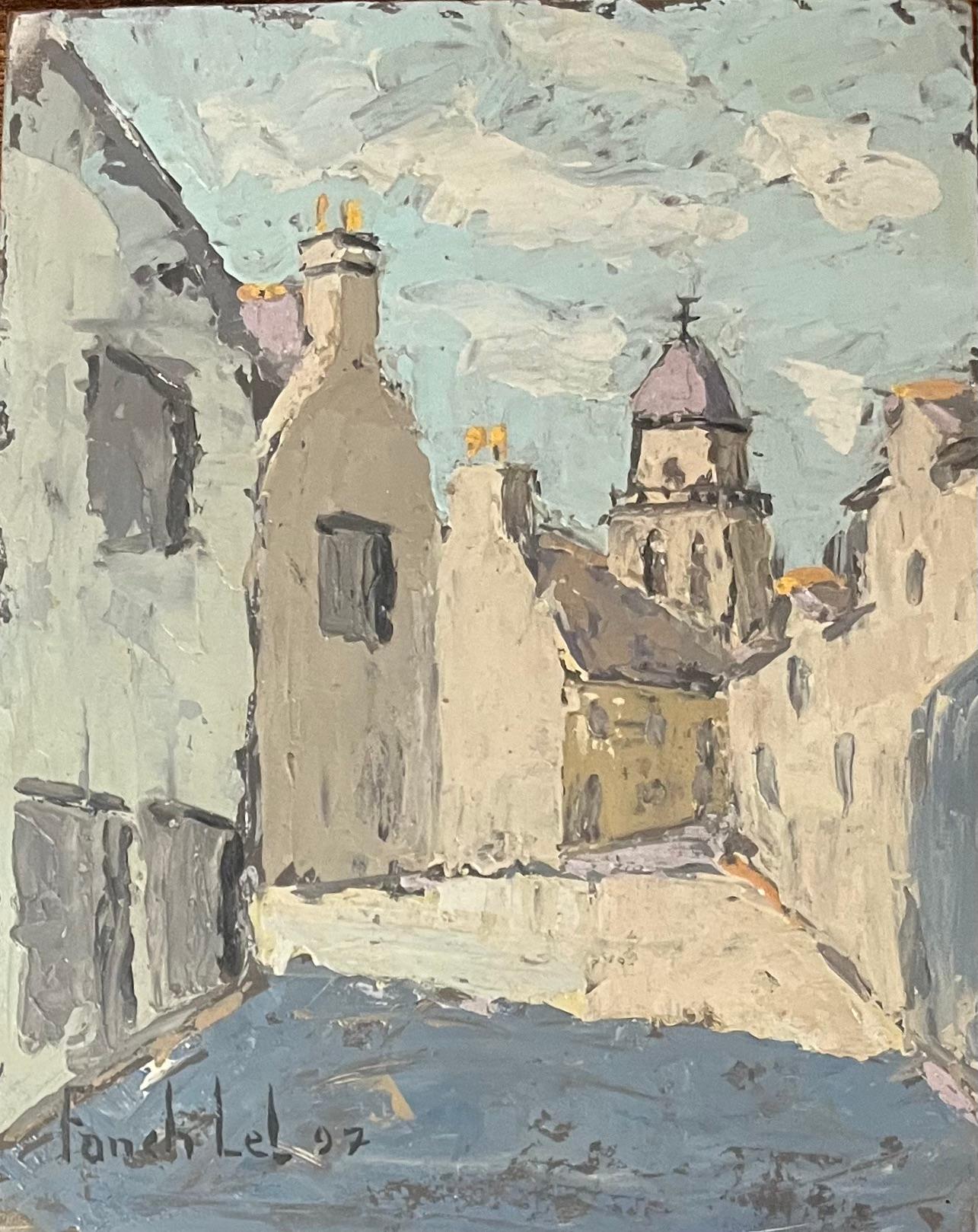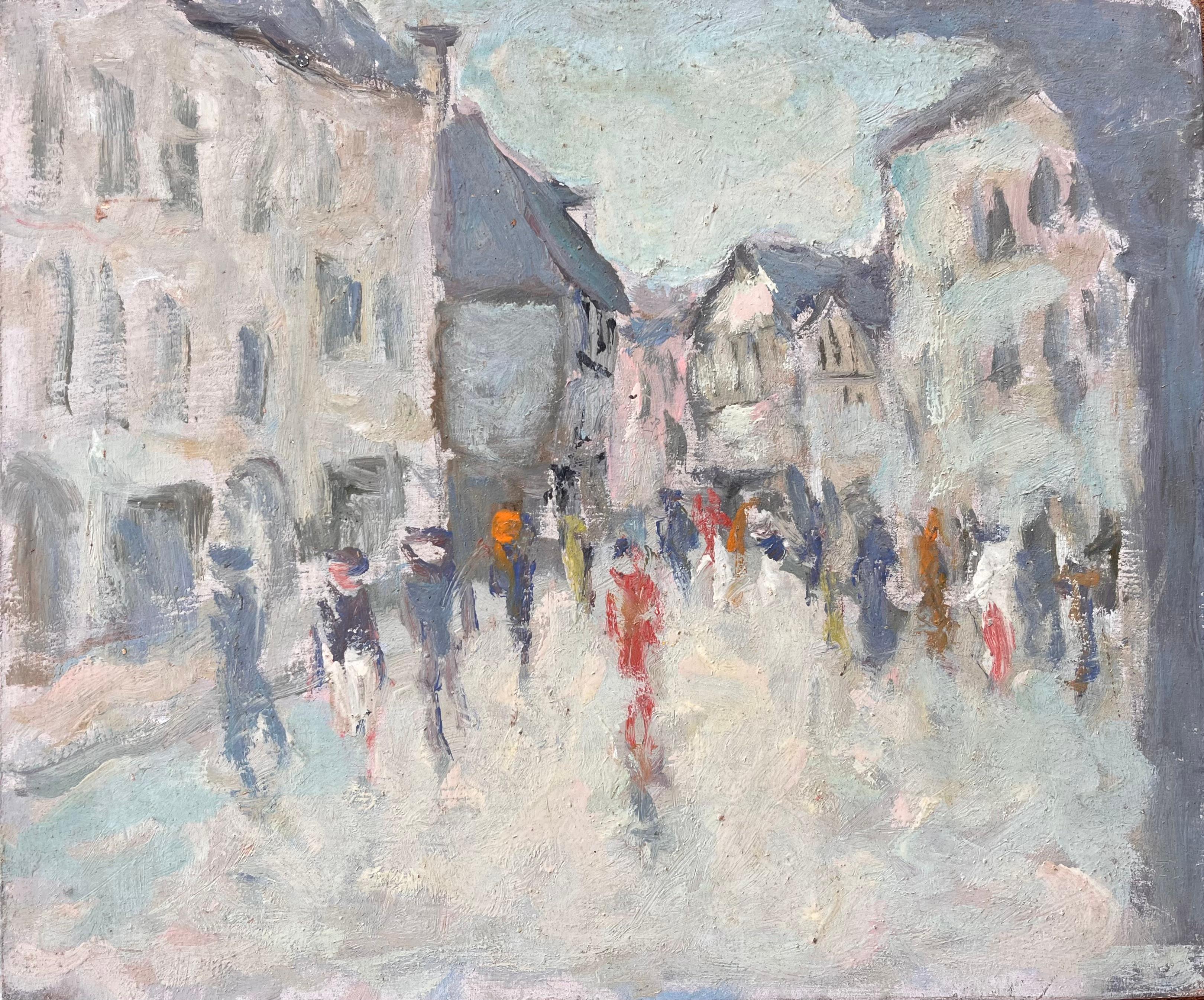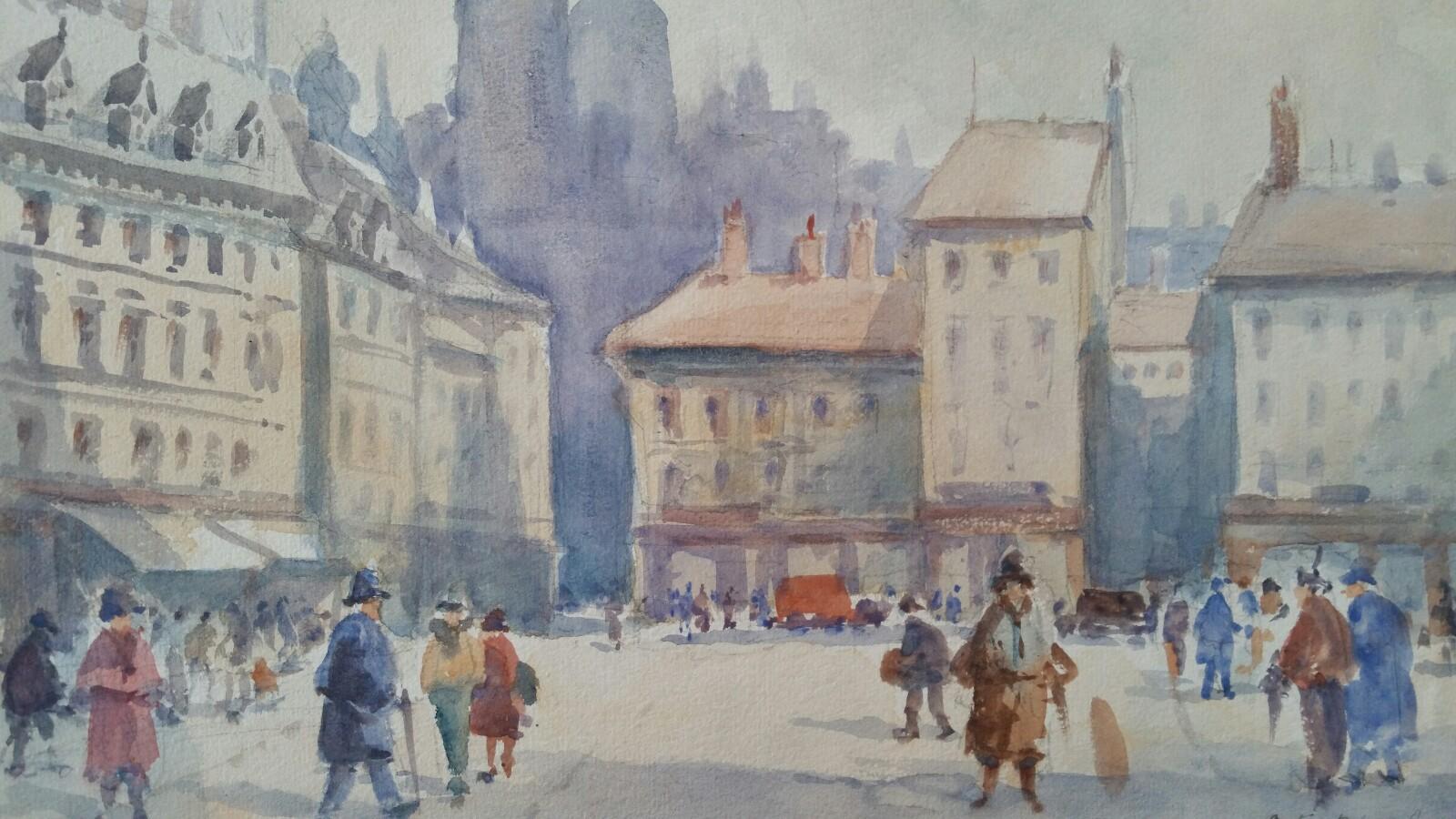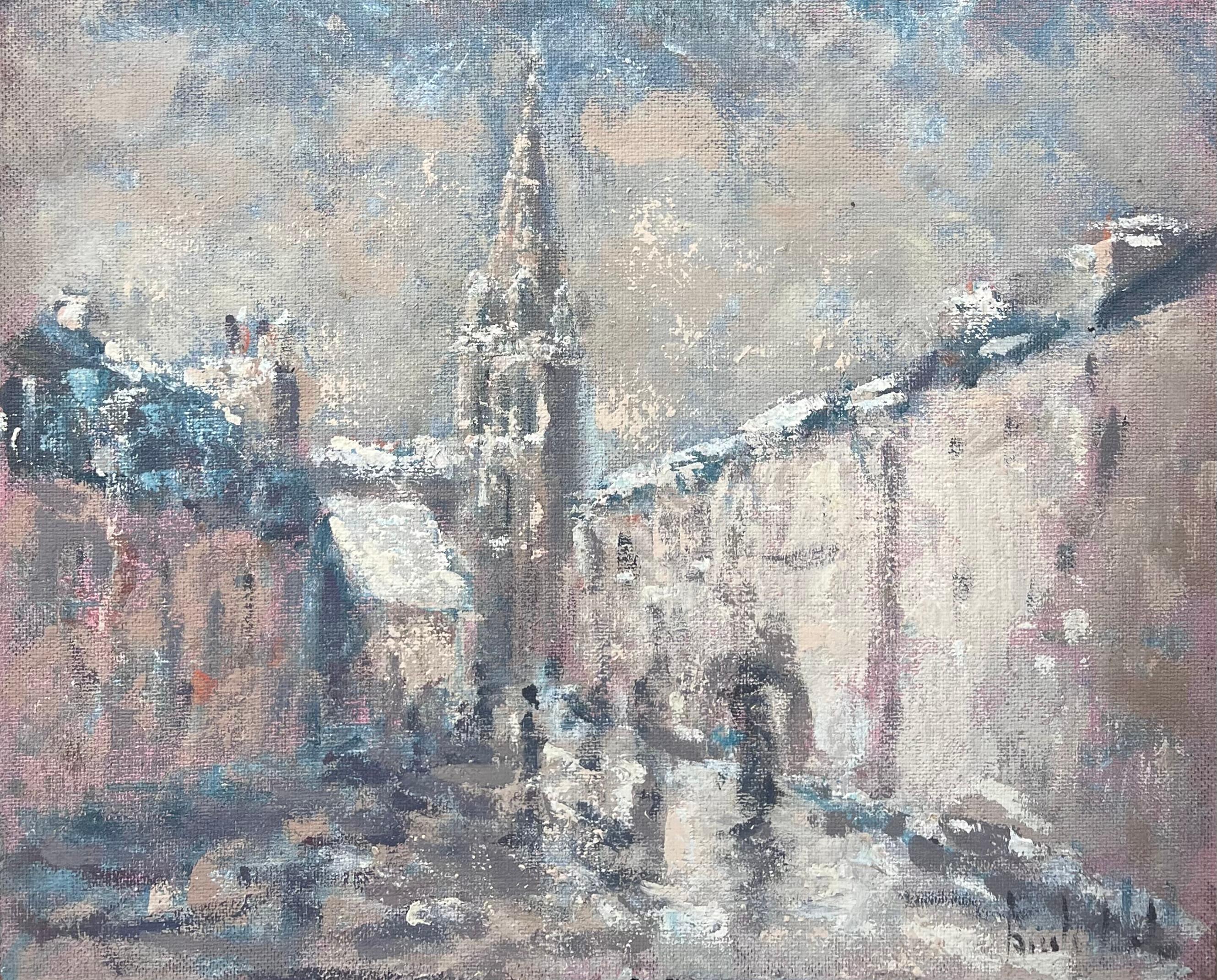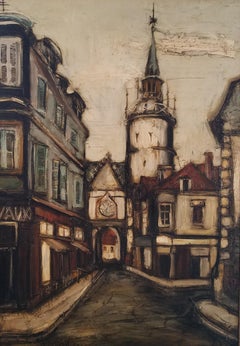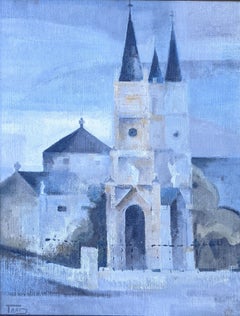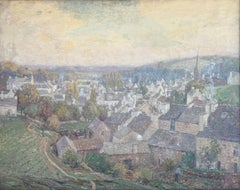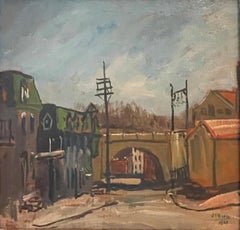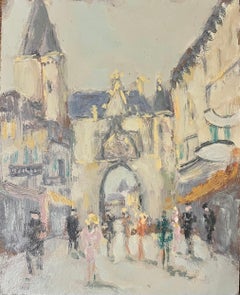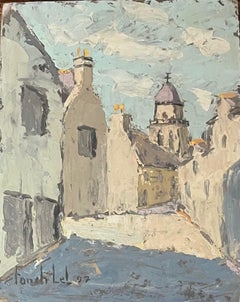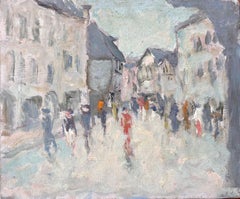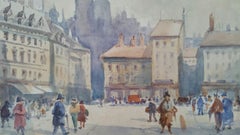Items Similar to "Nogent-le-Roi" Frank Myers Boggs, Atmospheric French Urban Landscape
Want more images or videos?
Request additional images or videos from the seller
1 of 7
Frank Myers Boggs"Nogent-le-Roi" Frank Myers Boggs, Atmospheric French Urban Landscape
$960
$1,20020% Off
£728.43
£910.5320% Off
€832.89
€1,041.1120% Off
CA$1,340.86
CA$1,676.0720% Off
A$1,490.85
A$1,863.5720% Off
CHF 778.44
CHF 973.0520% Off
MX$18,147.32
MX$22,684.1520% Off
NOK 9,932.57
NOK 12,415.7220% Off
SEK 9,306.35
SEK 11,632.9320% Off
DKK 6,216.01
DKK 7,770.0120% Off
Shipping
Retrieving quote...The 1stDibs Promise:
Authenticity Guarantee,
Money-Back Guarantee,
24-Hour Cancellation
About the Item
Frank Myers Boggs
Nogent-le-Roi
Signed and titled lower left
Graphite and watercolor on paper
13 1/2 x 10 1/4 inches
The Impressionist Frank Myers Boggs spent his formative and mature years abroad and in 1923 became a naturalized French citizen. He was born in Springfield, Ohio, but moved as a young boy to New York, where his father was a newspaper executive. The artist began his career at the age of seventeen as a wood engraver for Harper’s, preparing illustrations for Harper’s Weekly and for an American edition of the works of Charles Dickens. It has also been stated that he studied with the portraitist John Barnard Whittaker (1836–1926).
After working at Niblo’s Garden in New York with a scene painter named Vauglin, Boggs went to Paris to study scene painting. On his arrival there in 1876, he was unable to find anyone to instruct him in this field and instead entered the École des Beaux-Arts. Realizing that Boggs was not well suited to painting figurative subjects, his teacher Jean-Léon Gérôme (1824–1904) advised him to try some outdoor landscapes. Between 1877 and 1881, he concentrated on marine pictures and harbor scenes in Dieppe, Honfleur, and Grandcamp. Views of architecture and street scenes also fascinated him, and he painted them throughout his career. In 1878 or 1879, Boggs returned to New York. He did much of this painting on Shelter Island and exhibited at the National Academy of Design. His progressive French style, however, was not well received and he soon left again for Paris. In 1880 he began to exhibit at the Salon, and within the next few years, his work was attracting attention both in Paris and London. In 1884, Theodore Child described Boggs as “one of the most successful and one of the most promising of the young American painters in Paris” and lamented that he was not better appreciated in his native land. That same year, the artist spent March and April in New York before leaving for Holland and England, where he continued to work on marine and harbor views.
By the late 1880s, Boggs was acquainted with the Impressionists Claude Monet (1840–1926), Alfred Sisley (1839–1899), Pierre Auguste Renoir (1841–1919), and Eugène Boudin (1824–1898), but his affinity for marine subjects, his use of a somber tonal palette, and restrained impressionist technique better reflect his admiration for the Dutch marine painter Johan Barthold Jongkind (1819–1891), whom he met in Paris at this time. In 1888, on the death of his parents, he returned to New York. He exhibited the following year at the Universal Exposition in Paris and then in 1890 made a trip to Algiers, which precipitated a number of sketches and paintings of Arab themes.
Throughout the next decade Boggs traveled extensively in Europe and frequently visited family in America. He exhibited at the Salon, at most of the international expositions, and in major cities at home and abroad. By 1903 he settled more into Parisian life and two years later moved into an elegant house on the rue de Biraque. He worked extensively in watercolors, many of which depicted architectural subjects, and in 1921 had his first exhibition of etchings. His health failed in 1923, and he died peacefully three years later in Meudon, southwest of Paris. Boggs was awarded the French Legion of Honor posthumously.
- Creator:Frank Myers Boggs (1855-1926, American)
- Dimensions:Height: 19.25 in (48.9 cm)Width: 16 in (40.64 cm)
- More Editions & Sizes:Unique WorkPrice: $1,200
- Medium:
- Movement & Style:
- Period:
- Condition:
- Gallery Location:New York, NY
- Reference Number:1stDibs: LU1841214918522
Frank Myers Boggs
Frank Boggs was a master of cloudy skies in landscape paintings, but was more strongly attracted to the soft light of misty mornings and rainy afternoons than the brilliant sunlight of his Impressionist peers. Contemporary American critics tended to view Boggs as an Impressionist, especially when he exhibited in New York early in his career. But although his brush became loose and free and his palette lightened as he matured, the artist never completely adopted Impressionistic methods. He was known and appreciated for delicate and subtle harmonies of blue, gray and green. In this respect, his style has sometimes been compared to the Tonalism of James McNeill Whistler. Boggs was born in Springfield, Ohio, on December 6, 1855. While still young, he was brought to New York City where his father was a newspaper executive. At age seventeen he took his first job, as a wood engraver at "Harpers" magazine. At age twenty-one, he decided to go to Paris to study stage design, having received encouragement from a French designer whom he had met. Finding, however, no one in Paris to instruct him in his newly chosen profession, he enrolled at the Ecole des Beaux-Arts, where he studied painting under Jean-Léon Gérome. In 1923 Boggs became a French citizen. Three years later, preparations were underway to award him the Legion of Honor. When informed of this coveted recognition by his adopted country, he expressed great delight. Sadly, Frank Meyer Boggs died, however, the day before the award was made public on August 8, 1926.
About the Seller
5.0
Platinum Seller
Premium sellers with a 4.7+ rating and 24-hour response times
Established in 2022
1stDibs seller since 2022
115 sales on 1stDibs
Typical response time: <1 hour
- ShippingRetrieving quote...Shipping from: New York, NY
- Return Policy
Authenticity Guarantee
In the unlikely event there’s an issue with an item’s authenticity, contact us within 1 year for a full refund. DetailsMoney-Back Guarantee
If your item is not as described, is damaged in transit, or does not arrive, contact us within 7 days for a full refund. Details24-Hour Cancellation
You have a 24-hour grace period in which to reconsider your purchase, with no questions asked.Vetted Professional Sellers
Our world-class sellers must adhere to strict standards for service and quality, maintaining the integrity of our listings.Price-Match Guarantee
If you find that a seller listed the same item for a lower price elsewhere, we’ll match it.Trusted Global Delivery
Our best-in-class carrier network provides specialized shipping options worldwide, including custom delivery.More From This Seller
View All"Cityscape in France, " Franz Priking, Large Vertical Modern French Town Scene
Located in New York, NY
Franz Priking (1927 - 1979)
Cityscape in France, n.d.
Oil on canvas
46 x 32 inches
Signed and dated lower left
Provenance:
Private Collection, New York
...
Category
1950s Modern Landscape Paintings
Materials
Canvas, Oil
$10,000 Sale Price
20% Off
"French Cathedral, " Emilio Trad, Modern Cityscape Architecture
Located in New York, NY
Emilio Trad (Argentinian, b. 1953)
Untitled, 1978
Oil on Masonite
18 x 14 inches
Signed and dated on the reverse
Emilio Trad was born in 1953, in Buenos A...
Category
1970s Modern Landscape Paintings
Materials
Masonite, Oil
"French Landscape" Wilson Irvine, American Impressionist Rural French Town
Located in New York, NY
Wilson Irvine
French Landscape, circa 1908
Signed lower right
Oil on canvas
29 x 36 inches
A prolific Impressionist with a penchant for atmospheric scenes, Illinois native Wilson I...
Category
Early 1900s American Impressionist Figurative Paintings
Materials
Canvas, Oil
"Manayunk" Walter Emerson Baum, Pennsylvania Impressionist Landscape of Manayunk
By Walter Emerson Baum
Located in New York, NY
Walter Emerson Baum
Manayunk, 1953
Signed and dated lower right; titled and dated on the reverse
Oil on board
12 x 14 inches
Walter Baum was born December 14, 1884 in Sellersville,...
Category
1950s American Impressionist Figurative Paintings
Materials
Oil, Board
"Place Jeanne D'Arc, Paris, " Jules Herve, French Impressionism, Cityscape Street
By Jules René Hervé
Located in New York, NY
Jules Herve (French, 1887 - 1981)
Place Jeanne D'Arc, Paris, circa 1930
Oil on canvas
8 3/4 x 10 3/4 inches
Signed lower right; signed on the reverse
Jules Rene Herve, an impression...
Category
1930s Impressionist Landscape Paintings
Materials
Canvas, Oil
"Street In Paris (Eglise St. Julien)" Jane Peterson, American Impressionism
By Jane Peterson
Located in New York, NY
Jane Peterson
Street In Paris (Eglise St. Julien), circa 1910
Signed lower right; artist's labels on the reverse
Oil on canvas
24 x 18 inches
Exhibited
New York, Lincoln Glenn Galle...
Category
1910s American Impressionist Figurative Paintings
Materials
Canvas, Oil
You May Also Like
French Impressionist Oil Painting of Village Scene with Gothic Architecture
By Fanch Lel
Located in Cirencester, Gloucestershire
Title: French Impressionist Oil Painting of Village Scene with Figures and Buildings
By Fanch Lel (French b. 1930)
Size: 9.5 x 7.5 inches (height x width)
Oil painting on board, unfr...
Category
20th Century Impressionist Landscape Paintings
Materials
Oil
French Impressionist Oil Painting of Serene Street Scene in St. Suliac
By Fanch Lel
Located in Cirencester, Gloucestershire
Title: French Impressionist Oil Painting of Serene Street Scene in St. Suliac
By Fanch Lel (French b. 1930)
Size: 10.25 x 7.75 inches (height x width)
Signed: Yes
Oil painting on boa...
Category
20th Century Impressionist Landscape Paintings
Materials
Oil
Impressionist French Street Scene with Figures and Architecture Rue Animée
By Fanch Lel
Located in Cirencester, Gloucestershire
Title: Impressionist French Street Scene with Figures and Architecture Rue Animée
By Fanch Lel
Signed: Yes
Size: 9.75 x 11.75 inches (height x width)
Oil painting on board, unframed
...
Category
20th Century Impressionist Landscape Paintings
Materials
Oil
Mid 20th Century, Belgium, Antwerp, a double-sided painting
By Leonard Machin Rowe
Located in Cirencester, Gloucestershire
Belgium. Antwerp, a Double Sided Painting of a Busy Square
by Leonard Machin Rowe (1880-1968)
signed and dated lower left on both sides
watercolour painting on artist's paper, unframed
Image 9.75 x 13.75 inches, sheet 11.x 15 inches
Tweo paintings, one on each side of this sheet, by Leon. Rowe. Both sides are signed and dated '50. The scenes are almost idential, with small differences to the figures, so you may choose which version you wish to frame. The Cathedral of our Lady is seen in the background, with a square in the foreground - busy with colourful figures going about their daily business, and some vehicles.
Belgium and Luxembourg were two of Rowe's favourite destinations for his painting trips overseas. Often incorporating figures into his work, his style is very similar to Thomas Morley's paintings of French and Belgian market town scenes.
Signed front lower right on each side, dated '50. Inscribed as Antwerp. This work forms part of a watercolour collection we currently hold by Rowe.
Known as Leon Rowe, the artist was born in central England...
Category
1950s Impressionist Landscape Paintings
Materials
Watercolor
Foggy Day with Figures Walking Through The French Village Landscape Oil Painting
By Fanch Lel
Located in Cirencester, Gloucestershire
Foggy Day
Signed by Fanch Lel
Size: 15 x 18 inches (height x width)
Oil painting on board , unframed
Condition: Good condition overall with minor surface handling marks and light we...
Category
20th Century Impressionist Landscape Paintings
Materials
Oil
St. Grawi French Impressionist Painting of Village Street and Cathedral
By Fanch Lel
Located in Cirencester, Gloucestershire
Title: St. Grawi French Impressionist Painting of Village Street and Cathedral
by Fanch Lel
Signed: Yes
Size: 8.5 inches (height) x 10.75 inches (width)
Medium: Oil on board, unfram...
Category
20th Century Impressionist Still-life Paintings
Materials
Oil
More Ways To Browse
Antique French Newspaper
Le Roi A Paris
Dutch 1900 Painting
Dutch Marine Paintings
Monet Etching
Dutch Street Scene
Paintings Of Arab Scenes
Renoir Etching
Jean Renoir
Dutch Harbor Painting
Claude Monet Etching
Harpers Weekly
Jean Harper
Theodore Major
Eugene Boudin
Painting Eugene Boudin
Eugene Claude
Harpers Weekly Framed
